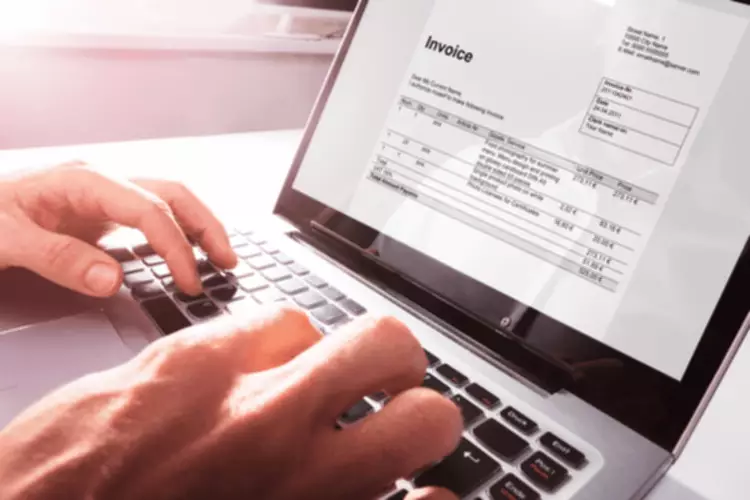Content

Conversely, with FOB destination, the title of ownership is transferred at the buyer’s loading dock, post office box, or office building. Once the goods are delivered to the buyer’s specified location, the title of ownership of the goods transfers from the seller to the buyer. Consequently, the seller legally owns the goods and is responsible for the goods during the shipping process. Under the FOB shipping point, the seller bears the cost until the shipment reaches the supplier’s shipping dock. Once the goods are on the ship, the buyer is responsible for all the expenses, including customs, taxes, and other fees. Under FOB Destination, the seller is responsible for all costs until goods reach their destination port.
- Delivery Point means the point of connection at which energy is delivered into the Grid System i.e. the Interconnection Point.
- When the risk of loss shifts from the seller to the buyer and determining who foots the bill for freight and insurance, all depend on the nature of the contract.
- The qualifiers of FOB shipping point and destination are sometimes used to reduce or extend the responsibility of the supplier in an FOB shipping agreement.
- If you’re buying products in bulk shipped to your business or warehouse, you’re already using the FOB options your wholesale distributors have chosen.
- Goods in transit should therefore be reported as a purchase and as inventory by the buyer, and as a sale and an increase in accounts receivable by the seller.
The supplier takes full responsibility for the computers and must either reimburse Company XYZ or reship the computers. FOB shipping point, also known as FOB origin, indicates that the title and responsibility of goods transfer from the seller to the buyer when the goods are placed on a delivery vehicle. Free on board, also referred to as freight on board, only refers to shipments made via waterways, and does not apply to any goods transported by vehicle or by air. DES. Delivered Ex Ship, which requires the seller to deliver products to a particular shipping port, where the buyer will take delivery on arrival. That also means that if a pallet of jewelry is lost or damaged in shipment, the buyer must file any claims for reimbursement – not the seller – since the shipment became the buyer’s responsibility immediately. Free on Board destination denotes that when the responsibility for the goods transfers from the seller to the buyer when it reaches the buyer’s premises. In other words, the seller is the legal owner of the goods and is responsible for it while it is in transit.
What Does FOB Shipping Point Mean?
FOB shipping point – Notes responsibility of goods and title transfer from seller to buyer once the goods are loaded on the delivery vehicle at the shipping point. Once this happens, and the legal title of all goods is transferred to the buyer, the seller is no longer responsible for the goods. There are many industry terms importers and exporters need to be well-versed in to guarantee their shipping relations are well understood. Some are more common than others, such as Free On Board , Free Carrier , and Ex Works . FOB, while being a fairly common term within freight collect shipping, is largely misunderstood.
What is FOB destination and FOB shipping point?
In a FOB shipping point contract, the seller transfers any title of ownership to the buyer upon the product leaving the seller's location. The buyer then has full ownership. In a FOB destination sale contract, the buyer may not receive the title of ownership until the product reaches the buyer's location.
The buyer is responsible for making any arrangements for shipment and for picking the goods up. FCA. Free Carrier, which means that the seller is obligated to deliver goods to an airport, shipping port, or railway terminal where the buyer has an operation and can take delivery there. Nationwide Auto Transportation can assist with the local car relocation from the address of origin to the port of origin anywhere in the United States of America. When it comes to FOB destination, the seller adjusts its records once the goods are delivered to the receiving dock. DDP also requires sellers to transport goods to the final location and pay for any relevant import customs formalities. Sellers are not held responsible for any in-transit loss once the goods are on board. Finally, the seller is typically knowledgeable on all export documents required in their own country, making the process fairly straightforward for them.
International Shipping Costs
FOB shipping point holds the seller liable for the goods until the goods begin their transport to the customer, while FOB destination holds the seller liable for the goods until they have reached the customer. Assume a fitness equipment manufacturer receives an order for 20 treadmills from a newly opened gym across the country. The terms of the agreement are to deliver the goods FOB shipping point. On the flipside, the buyer must note in its accounting system that it has inventory on its way. That inventory is now an asset on the buyer’s books, even though the shipment has not arrived yet. Under EXW or Ex Works, the seller only has to keep the shipment ready.

As a small business owner, you want to make your own decisions, and with FOB shipping point, it’s a matter of finding the right balance between reward and risk. We always needed, however, one pallet of books shipped to our offices for direct sales and marketing purposes. The FOB destination terms included the stipulation that the printer delivered to one address and having them split the order in San Diego was a significant extra expense for us. The buyer takes up all risks of damage or loss of goods once they are loaded onto the vessel at the port of origin. These loading costs include customs clearance, inland haulage, demurrage if any, origin documentation charges, and origin port handling charges – in this case, the origin port is Miami.
What is FOB Shipping Point?
Of course, it is in the buyer’s best interest to have the shipping terms be stated as FOB (the buyer’s location), or FOB Destination. International and domestic contracts should outline the provisions that include the terms of payment and the place of collection and delivery as agreed upon by both parties – the seller and the buyer. The term free on board should be indicated and identified by the specified physical location.
Once the products are delivered to the FOB address stated as the buyer’s address, it will be counted as a complete sale on the seller’s inventory while an increase on the buyer’s warehouse stock. On the other hand, another International commercial term used in the shipping process is the FOB shipping destination. The distinction of Free on board destination or FOB destination from FOB shipping point is that the seller remains liable for any loss or damage of the package until it gets delivered to the buyer. The buyer marks it an increase in stock once the package is delivered in good condition and gets to the warehouse. FOB shipping point transfers the title of the shipment when the goods are placed at the shipping point.
When at the shipping point, the buyer now has an open accounts payable balance though it also should now carry the treadmill on their financial records. The fact the the treadmills may take two weeks to arrive is irrelevant for this shipping agreement; the buyer will already possess ownership while the goods are in transit. The buyer takes responsibility for the transport cost and liability during transportation.
- The equipment manufacturer would not record a sale until delivery to the shipping point; it is at this point the manufacturer would record an entry for accounts receivable and reduce its inventory balance.
- It requires proper notifications to enter the buyer’s inventory management system.
- Timothy has helped provide CEOs and CFOs with deep-dive analytics, providing beautiful stories behind the numbers, graphs, and financial models.
- While the two terms are similar in both sound and meaning, there is a distinct difference between them.
- It is in the buyer’s best interest to have the shipping terms be stated as FOB (the buyer’s location), or FOB Destination.
- Incoterms is updated each decade, with the 2020 Incoterms published in late 2019.
FOB states that the Free On Board is one of the most common incoterms, so it’s expected for business owners to have a firm grasp of what FOB is. FOB shipping essentially indicates who is liable and responsible for goods if they are damaged, lost, or destroyed during shipment.
Traditionally with FOB shipping point, the seller pays the transportation cost and fees until the cargo is delivered to the port of origin. Once on the ship, the buyer is responsible financially for transportation costs, customs clearance, fees, and taxes. Conversely, with FOB destination, the seller pays the shipment cost and fees until the items reach https://www.bookstime.com/ their destination, such as the buyer’s location. That destination is the receiving port, not the final stop or seller’s warehouse in the journey across the country. The buyer assumes fees like customs clearance fees and taxes at port entry. Here at Strikingly we deal with several users who run their online stores through their ecommerce website.

Understanding the differences between each is as simple as knowing how much responsibility the buyer and supplier assume under each agreement. The FOB incoterm is only applied to shipments being sent by sea or waterway. Of the 11 different incoterms that are currently used in international freight, Free on Board is the one that you will encounter most frequently. Projects the amount of cargo transport that will increase each year at around 1.4% until 2045,” According to data from the U.S. Department of Transportation’s Bureau of Transportation Statistics .
Get free online marketing tips and resources delivered directly to your inbox. FAS. Free Alongside, which means that the seller must deliver fob shipping point goods on a ship that pulls up next to a ship of a certain name, close enough that the ship can use its lifting devices to bring it onboard.
- FOB is viable for most bulk cargo and non-containerised goods shipped by sea or inland waterway transport.
- If your customers are fully aware of the shipping process, there will be no misunderstanding between sellers and buyers.
- Previously, the Incoterms suggested that a ship’s rail serves as the point where the goods were loaded onto the vessel.
- It pertains specifically to the International Chamber of Commerce’s Incoterms 2010, and is used specifically when it comes to sea freight.
- Please note that some information might still be retained by your browser as it’s required for the site to function.
